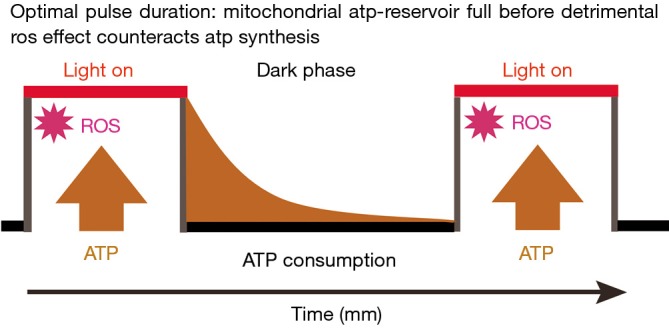Figure 1.

Self-explanatory illustration of the dynamic balance between exogenously controlled ATP synthesis during exposure of a cell to red to NIR light, and endogenous ATP consumption. The effect of the light is to reduce the viscous friction within and around the mitochondrial rotary motor thereby facilitating its normal function. Neither the cytochrome c oxidase dogma (12), nor the ROS theory (17,18) which works without ATP, nor the upregulation of gene expression (20,21), provides the understanding of the advantages of pulsed irradiation in biostimulation which eventually allows for the systematic optimization of the irradiation parameters for maximal ATP production and minimal ROS generation as well as minimal thermal damage. In combination with cell-friendly biomimetic surfaces (involved in minimizing contributions from exogenous ROS) the mechanism derived from the predictive model discussed here promises progress in the biostimulation of cells containing mitochondria. ROS, reactive oxygen species; NIR, near-infrared; ATP, adenosine triphosphate.
